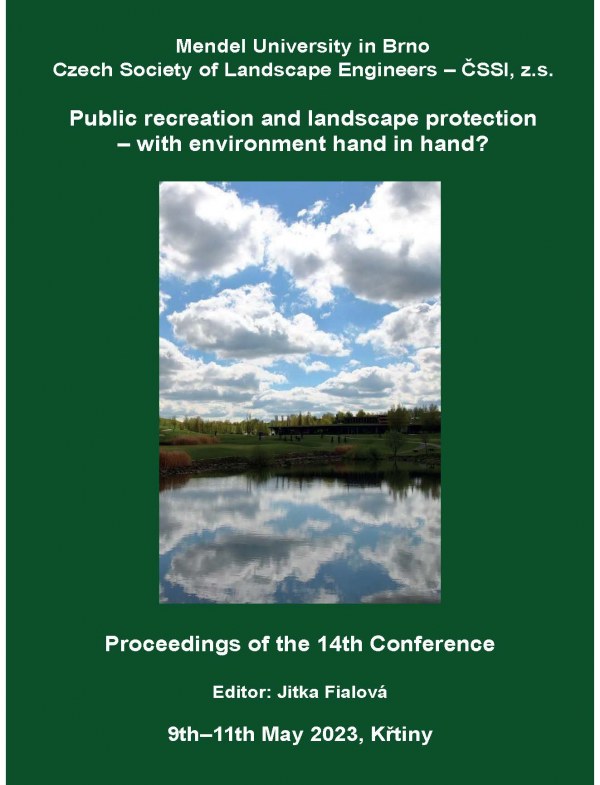
DOI: 10.11118/978-80-7509-904-4-0179
NON-WOOD FOREST PRODUCTS: “CULTURE” + “TRADITION” = EDUCATIONAL POSSIBILITIES”. DOES IT MAKE SENSE?
- Szczepan Kopeć, Paweł Staniszewski
Before man learned how to use wood as fuel, weapon or building material, he had used forest goods such as fruit, herbs, mushrooms etc. In the scientific literature, we can find many reports on their importance in culture and tradition. Their significance of forest goods in folk medicine is indisputable, but many of them, according to contemporary beliefs, had magical properties. People believed they were supposed to ensure happiness, prosperity, protect against diseases or even bring misfortune to another being. Many historical uses of these goods have been forgotten. The interest of societies in their history is currently increasing and they want to feel a connection with ancestors. They want to find out where superstitions and traditions prevailing in their country or family come from. Knowledge about non-wood forest products is a great opportunity to increase the awareness of societies about their history, but also to build awareness about the forest and nature. This paper presents an overview of selected non-wood forest products, highlighting their relationship with the folk tradition, but mainly in the context of forestry promotion - they can be an excellent element of forest education, and should also be included in the recreational management of the forest.
Keywords: forest utilisation, forest education, forestry in culture, traditional forest use
pages: 179-183, Published: 2023, online: 2023
References
- Antkowiak, L. (1998). Rośliny lecznicze. Wyd. AR Poznań.
- Bukowska-Pastwa, A. (2011). Być poganką : być poganinem: odrodzenie neopogańskie we współczesnej Polsce. Uniwersyteckie Czasopismo Socjologiczne, 5, 58-86.
- Dembner, S. A., Perlis, A. (eds.). (1999). Towards a harmonized definition of non-wood forest products. Unasylva - No. 198 - Non-wood Forest Products and Income Generation. FAO forestry. Vol. 50 1999/3.
- Grzywacz, A., Staniszewski, P. (2003). Wiem, co zbieram w lesie. Oficyna Wydawnicza MULTICO. Warszawa.
- Kopeć, S., Staniszewski, P. (2022). Leśne surowce i produkty niedrzewne w tradycji i kulturze. In: Las jako dziedzictwo przyrodnicze i kulturowe. 6: 69-99. Wydawnictwo SGGW. Warszawa. ISBN 978-83-8237-082-9.
- Mazerant, A. (1990). Mała księga ziół. Instytut Wydawniczy Związków Zawodowych. Warszawa. ISBN 83-202-0810-6.
- Paluch, A. (1985). Miejsce roślin w praktykach i zwyczajach związanych ze śmiercią człowieka na wsi polskiej. In: Etnobotanika. Materiały I Ogólnopolskiego Seminarium Etnobotanicznego. Kolbuszowa, 19-20. 07. 1980. Wrocław.
- Pettenella, D., Corradini, G., Da Re, R., Lovrić, M., Vidale, E. (2019). NWFPs in Europe - consumption, markets and marketing tools. In: Wolfslehner, B., Prokofieva, I., Mavsar, R. (eds.). Non-wood forest products in Europe: Seeing the forest around the trees. What Science Can Tell Us, 10, 31-54. European Forest Institute.
- Plater, S. (1841). Mała Encyklopedya Polska. Leszno i Gniezno. E. Günther.
- Seeland, K., Staniszewski, P. (2007). Indicators for a European Cross-country State-of-the-Art Assessment of Non-timber Forest Products and Services. Small Scale Forestry, 6(4), 411-422.
 Go to original source...
Go to original source... - Staniszewski, P. 2018. Perspektywy niedrzewnego użytkowania lasu. Postępy Techniki w Leśnictwie, 143, 7-10.
- Staniszewski, P., Woźnicka, M., Janeczko, E., Janeczko, K. (2016a). Non-wood forest products use in the context of forest recreation and education. Public recreation and landscape protection - with nature hand in hand... Conference proceeding, pp. 145-151. Mendel University in Brno.
- Staniszewski, P., Woźnicka, M., Janeczko, E., Janeczko, K. (2016b). The use of forest undergrowth as an element of forest education and recreation. Journal of Landscape Management, Vol. 7, nr 1: 22-27.
- Staniszewski, P., Nowacka, W. Ł., Gasek, A., Oktaba, J. (2017). Czy poszerzanie wiedzy w zakresie użytkowania zasobów runa leśnego to dobry pomysł? [Extending the awareness and knowledge of forest undergrowth use - is it a good idea?]. Stud. i Mat. CEPL. Rogów., 50(1),.37-44.
- Śliwowski, T. (2016). Dziko rosnące rośliny jadalne i użytkowe w tradycji. Praca inżynierska. Wydział Leśny SGGW w Warszawie.
- Śliwowski, T. (2017). Tradycyjne i współczesne wykorzystanie roślin leczniczych. Praca magisterska. Wydział Leśny SGGW w Warszawie.
- Vargas, W., Zych, P. (2018). Bestiariusz słowiański - część pierwsza i druga. Wydawnictwo BOSZ. Olszanica. ISBN 978-83-7576-367-6.
- Ustawa o lasach [Act on forests] z dnia 28 września 1991, Dz. U. 1991 Nr 101 poz.
- Wielgosz, T. (2008). Wielka księga ziół polskich. Publicat S. A. Poznań. ISBN 978-83-245-9538-9.


